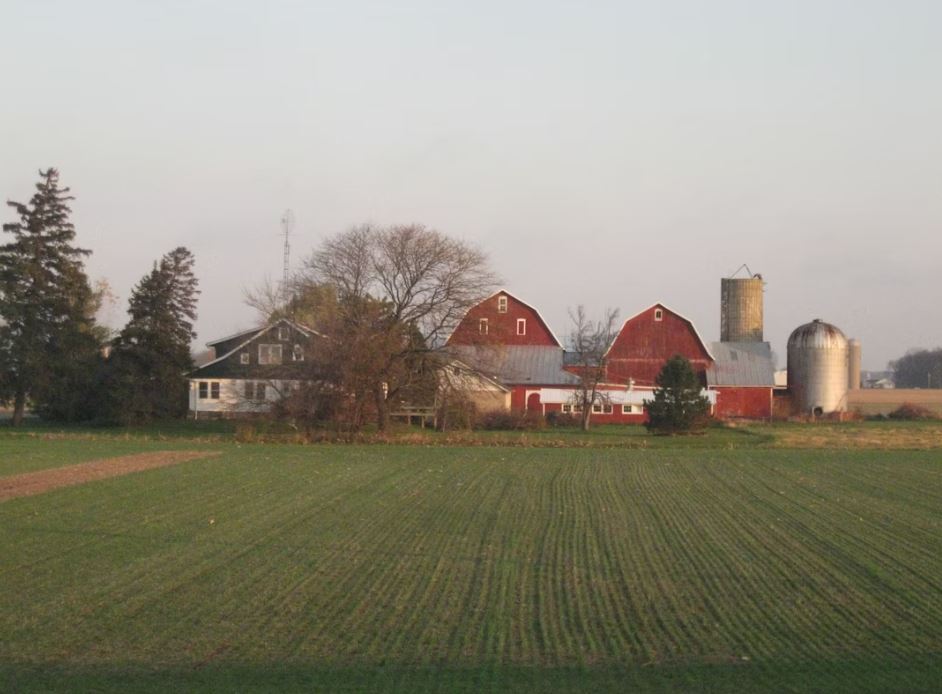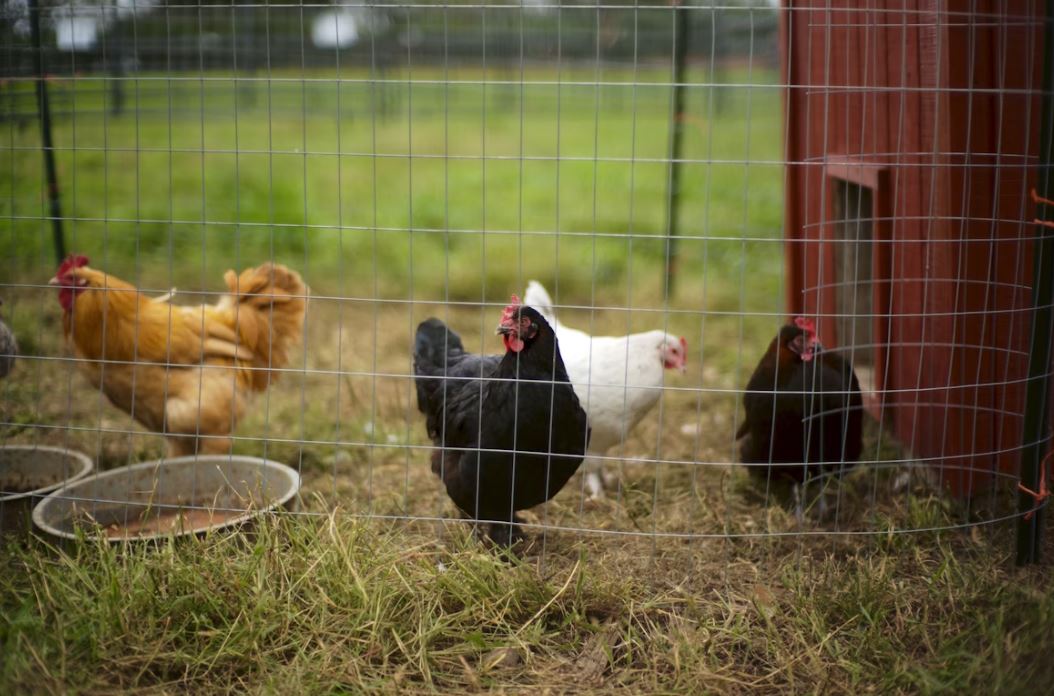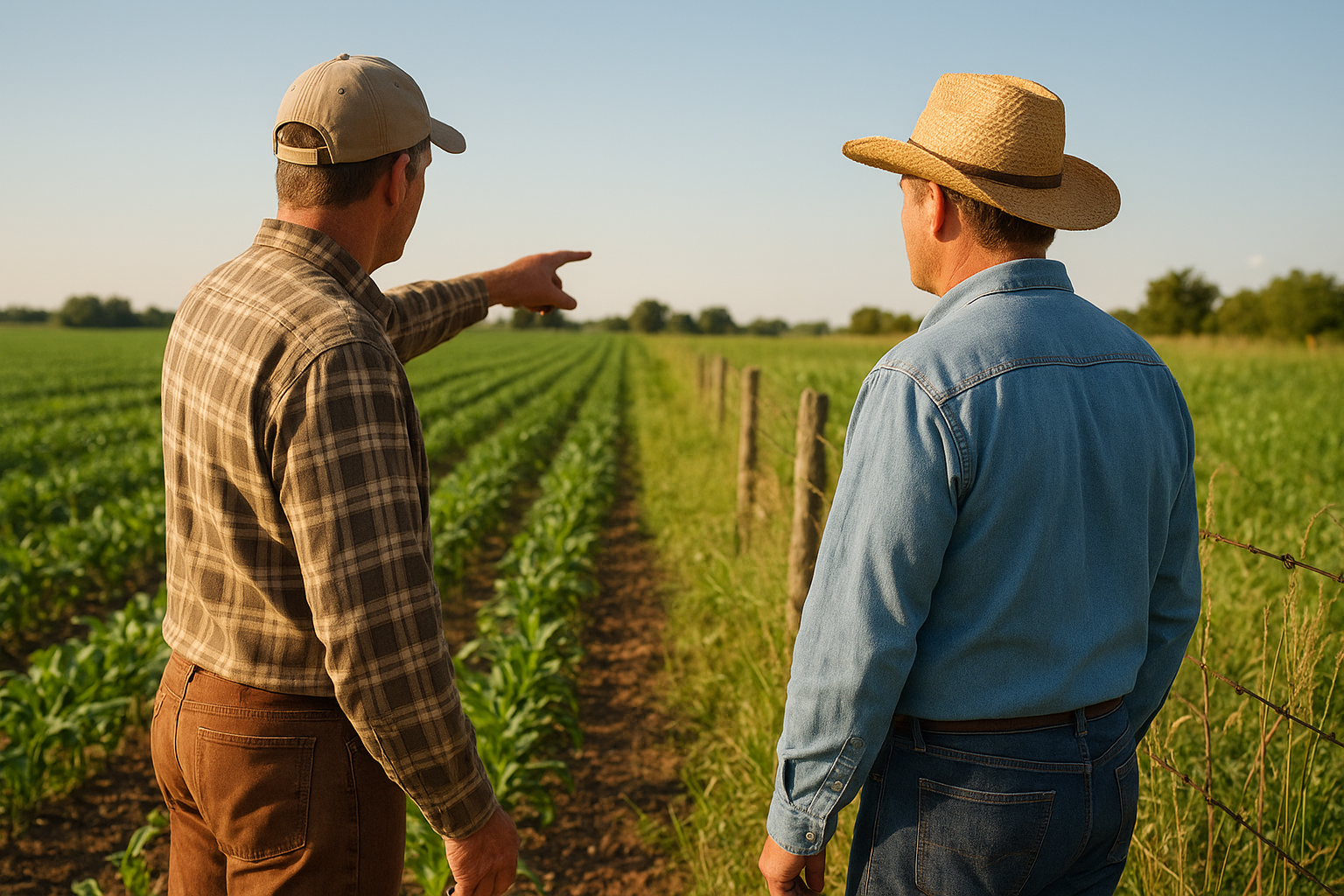Bottom Line Up Front
Successful trappers are made in September, not November. Getting permission isn't about begging for favors - it's about building partnerships with landowners who need your help solving predator problems. The key is positioning yourself as the solution to their issues, not just another person asking for something.
I stopped at a retired farmer's house yesterday. It wasn't at the top of my list of most favorite things to do, but I knew it had to be done. I knocked on the door and I could see him making his way to the landing. Stepping two steps down, I gave him a little room between the stranger on his porch stairs and himself. It also put me lower, looking up to the man - a perfect way to help seem like a less daunting stranger.

"Hi, I'm Jack Ammerman. I hope I didn't bother you, but I wanted to ask you about the predators around here. I was driving down your road and it sure looks like it might be a coyote heaven. Do you ever see any or hear them at night?"
At that point he was itching to tell me the stories - how it seemed that they were right under his bedroom window one night and he hollered at them to "go away!"
He went on to talk about his neighbor down the road that has chickens. I let him know that I saw the chickens out on the edge of his neighbor's grassy yard. "Well, John used to have a few more, but a weasel or fox or something got into his pen. Killed a bunch that night."
These are the stories that I like to hear.
The Art of the Approach
"Well, I'll stop down to John's next, but the reason I'm talking to you is that I'd like to try to trap a fox or a coyote along your fence line this winter. Would you mind if I tried to get a coyote?"
Without hesitation, he said "You go right ahead - and don't stop at one! Those bastards can all get trapped as far as I'm concerned. I know they kill fawns."
With that quick dialogue, I had just secured permission to trap his 40 acres.
We talked some more about where he grew up and the different jobs that he'd had in his life. I told him that I'd check in with him as the season got closer - and at that time I'll make sure that he doesn't mind me setting a few raccoon sets as well. I thanked him and waved as I pulled out of his driveway. I thought to myself, "What a great guy. And to think I didn't really want to stop and ask!"

The key to that interaction wasn't luck. It was understanding that I wasn't asking for a favor—I was offering to solve a problem. Every rural landowner has predator issues. Coyotes killing fawns, foxes in the chicken coop, raccoons destroying sweet corn. When you frame your request around helping them with these problems, you're not a beggar; you're a problem-solver.
The Chain Reaction Effect
Feeling good about things, I drove an eighth of a mile down to his neighbor, John, that has the chickens. After a few knocks, the door opened and it wasn't John looking at me. I suspected it was his wife.
"Hi, I'm Jack Ammerman. I was just down talking with your neighbor, Ed. He's having me trap some of the coyotes and fox from his property this winter. He told me about your chicken situation, and suggested that I come talk to you. I guess you had something get into your chicken coop?"
It was her turn. "You know Ed? He's so sweet! Yes - we had seven chickens killed and my husband had to reinforce the fencing. We hear the chickens raising cane some nights so we know something's trying to get in. My husband thinks it's a raccoon. He tried catching it in a cage, but it just kept eating the food and leaving."
That was my in! "I'd be happy to set a few traps for you too, since I'll be right there at Ed's."

She didn't say yes, but she didn't say no. Instead, she told me that she'd ask her husband when he got home from work. I gave her my number and asked her to text or call me, if she'd be so kind.
I didn't hear anything from her that night, so I planned on stopping back in after a few days. Luckily, the text came the next day: "My husband said yes to trapping. We don't want chickens hurt so we would like you to stay in the field next door or in our woods. My sister lives down the road. Would you be interested in trapping on her farm? Her number is 989-207-xxxx"
And with that text, I now had over 100 acres locked up and yet another call to make.
It seems so easy - and this time it was. Dropping names and being friendly, I believe I could have locked up the whole square mile, but for what I wanted, this will be just fine!
Reading the Signs: When NOT to Stop
Sometimes things don't go the way you think they should. I can remember one time, after being refused, getting back into my truck. As I put it in reverse, my eye caught the bumper sticker on the SUV in the driveway: "Proud Stray Cat Mom - TNR." I rolled my eyes because I wasted my time and I should have seen that red flag as I pulled up.

Learning to read the subtle (and not-so-subtle) signs saves time and prevents awkward encounters. Look for clues before you knock: animal rights bumper stickers, "No Hunting" signs that seem aggressively placed, properties with multiple bird feeders and "wildlife sanctuary" mentality. These aren't your people, and that's fine. Move on to the next place.
The September Strategy
September is the golden month for securing trapping permission. Here's why: harvest hasn't started in earnest, hunting season stress hasn't begun, and landowners have a little breathing room for you. Their chicken losses are fresh in their minds, their gardens have been raided by raccoons all season, and they've heard coyotes howling every night.
Timing is Everything
Avoid asking during harvest (October), deer season (November), or when farmers are obviously busy. September gives them time to think about your request without seasonal pressure. It also shows you're planning ahead and serious about what you do.
Start with the properties you drive past regularly. The ones where you've seen predator sign, heard stories at the coffee shop, or noticed livestock. Make a list and work systematically through your area. Don't just hit the easy ones - sometimes the toughest-looking farmhouse hides the most grateful landowner.
The Five Rules of Permission-Getting
1. Lead with Their Problem, Not Your Want
Never open with "Can I trap on your land?" Instead, start with something like,"I'm looking for coyotes." or "I noticed you have chickens - have you lost any to predators?" Get them talking about their problems first. Once they're telling you about dead chickens or coyotes under their bedroom window, offering to trap becomes the obvious solution.
2. Position Yourself as the Professional
Don't come across as a weekend hobbyist looking for fun. Present yourself as someone who takes predator control seriously. Mention your experience, your success with similar problems, and your commitment to safety. Carry business cards if you have them, or at least have your contact information written neatly on paper. I bought a box of 50 business cards for a very reasonable price. The card has my name and phone number along with "Avid Outdoorsman." They sure come in handy!

3. Know Your Local Regulations
Be prepared to discuss trapping laws, safety requirements, and your Michigan furbearer License. Many landowners worry about liability and legal issues. Knowing the rules shows you're legitimate and helps put them at ease.
4. Offer Something in Return
Most farmers don't want money for trapping permission. They want their problems solved. But offering to share a pelt, provide updates on your catches, or help with small farm tasks builds goodwill. I've yet to have a farmer take me up on my offers of help, but that day will probably come - and I'll be there! The relationships you build are worth more than the immediate permission.
In the early 1990s, I hunted with Mike St.Pierre of Clio, Michigan. Mike taught me to buy silver rounds at a coin store and give them to landowners that let us hunt. At that time, the one ounce silver coins were $20 each, but that was a steal if it meant cementing in a new place to hunt on private property.
The landowners were always shocked and appreciative of the gesture. As Mike told me, "The coins look like they're worth a fortune, and the landowners think you've really given them something!"
Those brilliantly shiny coins are now double the price, yet I still carry a few in my truck for certain situations.
5. Set Clear Boundaries
Be specific about where you want to trap, when you'll be there, and how you'll access the property. Farmers need to know you won't interfere with their operations or create problems. Discuss livestock areas to avoid, gates to keep closed, and fields that might be off-limits during certain times.
If you want to drive in their fields, the time to discuss that is before you do it. The "after you do it" discussions aren't always so nice.
Maintaining the Relationship
Getting permission is just the beginning. Keeping it requires year-round relationship maintenance. Here's what successful trappers do:
Check in regularly: A text or phone call every few months keeps you in their thoughts. Share updates about what you're catching, ask about their continuing predator problems, and remind them you're still interested in helping.
Follow through on promises: If you say you'll check in before season, do it. If you promise to let them know what you catch, follow through. If you offer to help with farm work, show up when they need you.

Communicate your results: Farmers love hearing about the predators you remove. Share photos of your catches (if appropriate), discuss the benefits they're seeing, and reinforce that your trapping is solving their problems.
Be flexible and accommodating: If they need you to avoid certain areas during calving season or move your sets for harvest, do it without complaint. Their farm operations come first, and understanding this builds trust.
Building Your Network
The best permission comes from referrals. Once you prove yourself on one property, word spreads quickly through rural communities. Coffee shop conversations, church socials, and township meetings become your marketing channels. Rural people talk, and a recommendation from a respected neighbor is worth more than any cold call.
Keep a simple record of your contacts: names, addresses, phone numbers, and notes about their specific problems. This becomes your permission database that you can reference year after year. Note things like family names or details that you may refer back to one day in a conversation.
"The difference between trappers who always have great places to set and those who struggle for access isn't luck or location. It's the time they invest in building relationships before they need them."— Veteran Trapper Wisdom
September is permission season. Use this month to build the foundation for your trapping success. Remember: you're not asking for favors, you're offering solutions. Position yourself as the professional who can solve their predator problems, and landowners will become eager partners in your trapping success.
The best trappers understand that relationships matter more than any individual trap set. Invest the time now, and you'll have prime trapping access for years to come.